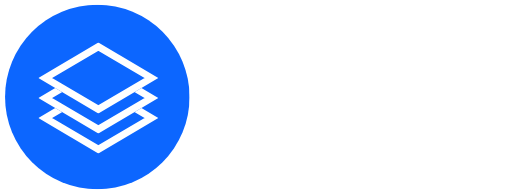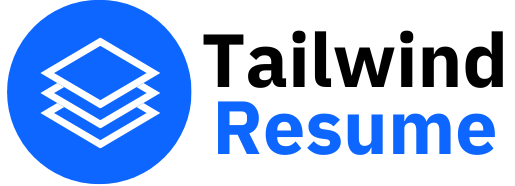Creating Technical Highlights in Your Career
Common Challenges
Throughout our previous guides, we’ve focused on resume creation, and it’s clear that the most crucial elements are your projects and technical achievements. Without these substantial elements, even the most polished resume format becomes an empty shell. In this section, we’ll move beyond resume formatting to discuss how to create standout moments in your technical career. This approach isn’t just about resumes - it’s essential for interviews, job performance, and overall career development.
Technical highlights are practical achievements that come from hands-on experience. However, many developers struggle to identify these highlights, especially those working at smaller companies or startups. Here are some common challenges I’ve observed through my coaching experience:
- Being the sole developer at a small company without mentorship
- Repetitive business requirements with little technical challenge
- Lack of standardized processes (no requirement analysis, code quality standards, git workflows, testing, or CI/CD)
- Career stagnation due to limited exposure to advanced practices
This often results in resumes containing generic statements like:
Familiar with React fundamentals, experienced with React Router, Redux, and Create React App
Or:
Built admin dashboards using the React ecosystem
These descriptions reveal basic CRUD applications with simple authentication - they won’t stand out among numerous similar applications. Let’s explore how to break through these limitations and create meaningful technical highlights.
Solutions
When you don’t have prestigious educational credentials or big tech company experience, how can you break through limitations and create standout achievements? Here’s a practical approach:
While changing jobs might seem like a solution, it can be challenging without competitive projects in your portfolio. Instead, I recommend a shortcut: deliberately addressing these limitations by focusing on projects that demonstrate complexity, depth, and breadth. Don’t be intimidated by these terms - let’s break down specific approaches.
The following examples are based on frontend development, but the principles apply to any technical field. The prerequisite is a solid foundation in your core technical skills.
Approach 1: Complex Web Applications
Consider building sophisticated single-page applications (SPAs) that go beyond basic CRUD operations. For example, a low-code editor or design tool:
Such projects effectively demonstrate both technical depth and breadth:
Data Complexity
- Complex form handling and validation
- Real-time data synchronization
- State management across components
Interaction Complexity
- Drag-and-drop functionality
- Keyboard shortcuts
- Undo/redo capabilities
- Real-time collaboration features
Authorization Complexity
- Role-based access control
- Feature flags
- Multi-tenant architecture
Your resume could then evolve to:
Developed a Low-Code Design Platform using TypeScript + React
- Implemented dynamic form generation using JSON Schema, supporting complex dependencies and real-time updates
- Built advanced interactions including drag-and-drop, scaling, keyboard shortcuts, and undo/redo functionality
- Integrated third-party libraries for enhanced features - Cropper.js (image editing), html2canvas (screenshots), qrcode.js (QR code generation)
Approach 2: Component Libraries
Modern frameworks are component-based, and many companies maintain their own component libraries or customize existing ones. Creating a component library involves:
- Development best practices
- Testing methodologies
- Build processes
- Documentation
- Package publishing
This experience is valuable and easily demonstrable - publish your library to npm and open-source it on GitHub. Better yet, create documentation using tools like Storybook or a custom documentation site.
Your resume could highlight:
Led Development of Company’s Core Component Library - TailwindUI
- Built React components with TypeScript and Tailwind CSS
- Achieved 90%+ test coverage using React Testing Library
- Implemented automated releases using GitHub Actions
- Published to npm: npmjs.com/package/tailwindui
- Documentation: tailwindui.dev
Approach 3: Frontend Infrastructure
Infrastructure work is crucial in larger organizations. While one person can build a project quickly, coordinating 100 developers requires robust processes and tools. Experience with development infrastructure is highly valued:
Developed Company-wide Frontend CLI Tool
- Built with Node.js and TypeScript
- Manages project scaffolding, iteration, cloud builds, and deployments
- Uses Turborepo for monorepo management
- Integrates with GitHub/GitLab for automated workflows
- GitHub: github.com/company/frontend-cli
Approach 4: Performance Optimization
Performance optimization is:
- Easy to implement in companies (cost savings)
- Highly quantifiable
- Clearly demonstrable in resumes
Focus on complex applications where optimization makes a significant impact. A project with 15,000 lines of code and multiple third-party dependencies provides more meaningful optimization opportunities than a simple static site.
Led Main Site Performance Optimization
Bundle Size Optimization:
- Reduced bundle size from *KB to *KB through:
- Code splitting and lazy loading
- Tree shaking optimization
- Module federation
- Details: blog.company.com/bundle-optimization
Loading Performance:
- Improved Core Web Vitals scores:
- FCP from *s to *s
- LCP from *s to *s
- CLS from * to *
- Implemented modern performance techniques:
- Edge caching
- HTTP/3
- Image optimization
- Details: blog.company.com/loading-optimization
Approach 5: Expanding Technical Breadth
While specialization is important in tech, having broader knowledge can be beneficial:
-
AI and LLMs: The AI revolution presents exciting opportunities for developers:
- Building LLM-powered applications using OpenAI API, Anthropic Claude, or open-source models
- Creating AI agents and autonomous systems
- Implementing RAG (Retrieval Augmented Generation) systems
- Fine-tuning models for specific use cases
- Tools: LangChain, LlamaIndex, Vector Databases (Pinecone, Weaviate)
-
Web3 and Blockchain: The Web3 space remains an innovative area:
- Smart contract development with Solidity
- DeFi protocol integration using Ethers.js and Web3.js
- Building dApps with modern frameworks
- Layer 2 solutions and scaling technologies
-
Full Stack Development: Modern full-stack development encompasses:
- Backend: Node.js with frameworks like Next.js App Router, tRPC
- Database: PostgreSQL, MongoDB, Redis
- ORM: Prisma, DrizzleORM
- API: GraphQL, tRPC, REST
- Edge Computing: Edge Functions, Cloudflare Workers
-
DevOps and Cloud Native: Infrastructure as code and cloud expertise:
- CI/CD: GitHub Actions, GitLab CI
- Containers: Docker, Kubernetes
- Cloud Platforms: Vercel, AWS, GCP
- Infrastructure as Code: Terraform, Pulumi
- Monitoring: OpenTelemetry, Grafana
-
Additional Technologies:
- WebAssembly: Rust, AssemblyScript for high-performance web apps
- Machine Learning: TensorFlow.js, ONNX for browser-based ML
- Real-time: WebRTC, WebSocket for live collaboration
- Edge Computing: Cloudflare Workers, Deno Deploy
Implementation
While you should try to develop these highlights within your current role, if work limitations prevent this, invest personal time and resources in self-directed projects. The key is building a portfolio of meaningful technical achievements that demonstrate your capabilities and potential.

